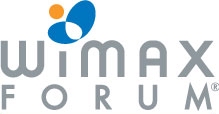 |About|News|Products|Prices|Solutions|Support|Registration|Services|Jobs|Contacts|Home|
|About|News|Products|Prices|Solutions|Support|Registration|Services|Jobs|Contacts|Home| 
 |About|News|Products|Prices|Solutions|Support|Registration|Services|Jobs|Contacts|Home|
|About|News|Products|Prices|Solutions|Support|Registration|Services|Jobs|Contacts|Home| 
Winetworks mobile 802.16e Wimax products and solutions


|
Class
|
Product
Name |
Function
|
|
|
Point
of Presence |
AAA
Servers |
Authentication,
Authorization, and Accounting |
|
|
NMS
Servers |
Host
the WiNMS application |
||
|
DHCP
Server |
Dynamic
Host Configuration Protocol |
||
|
ASN
GW |
WiMAX
Access Service Gateway |
||
|
Base
Stations |
WiN70xx-2
|
Compact
outdoor base station |
|
|
WiN72xx-2
|
Pico
base station |
||
|
WiNPS
|
Base
station power supply |
||
|
CPE
Terminals |
WiN52xx-2
|
Outdoor
subscriber unit |
|
|
WiN56xx-2
|
Indoor
subscriber unit |
||
|
WiN57xx-2
|
PC-Card
subscriber unit |
||
|
WiN58xx-2
|
USB
Dongle |
||
|
WiN1010
|
WiMAX
Data Adapter Gateway indoor unit |
||
|
WiN1020
|
WiMAX
Home Gateway Triple-Play Multi-Service gateway indoor unit |
||
|
WiN1030
|
WiMAX
Office Gateway Triple-Play Multi-Service gateway indoor unit |
||
|
Standard |
802.16/802.16a |
802.16d |
802.16e |
|
Usage |
Fixed Outdoor |
Fixed Outdoor/Indoor |
Fixed/Portable/Mobile |
|
Technology |
QAM |
OFDM |
OFDMA |
|
Applications |
•
E1/T1 service for enterprises •
Backhaul for Hotspots • Backhaul for cellular • Limited residential • Broadband access |
•
Broadband access for residential users
(High Speed •
Internet,Video, VoIP •
Backhaul |
•
Mobile-Cellular • "Portable"
Broadband access • Always Connected CPE • Laptop/PC Card • Mobile
Devices (HH, PDA) • Indoor
Self-Install • Broadband Access: Data,
VoIP & Video • Public Safety |
|
Advantages |
It supports mesh deployment
in which transceivers can act relay stations, passing messages from one
station to the next, thereby increasing the range. The use of lower
frequencies allows more flexible implementations of the technology as these
frequencies can penetrate walls and other barriers without the levels
attenuation experienced at higher frequencies. |
It provides minor
improvements and fixes to 802.16a. Profiles for compliance testing are also
provided. |
This standard harmonizes the
networking between fixed base stations and mobile devices, rather then just
between base stations and fixed recipients. This enables handovers for mobile
users to receive a high quality service as their vehicles move. |
Revised: July 14, 2008, Copyright MATRIX, UAB
